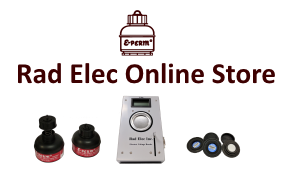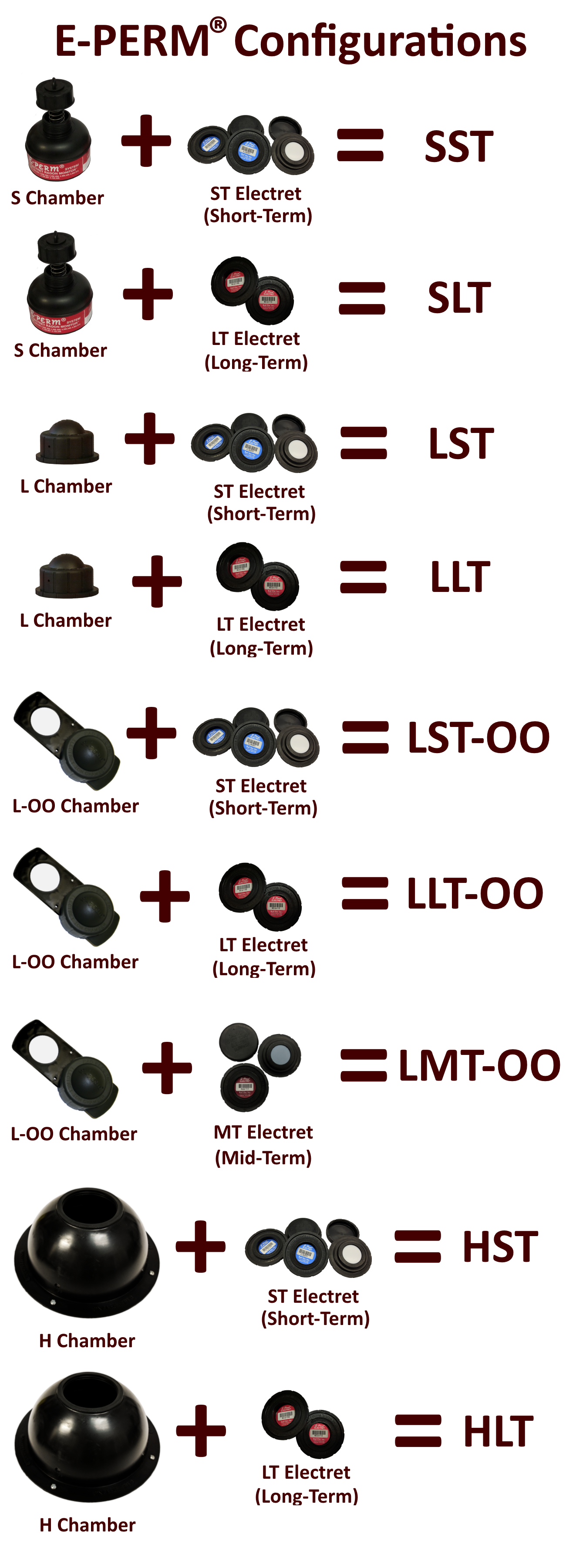
Rad Elec's Online Store is now open for business! Shop for your E-PERM® products at your convenience, at any time.
Once you get the hang of it, the E-PERM® System is easy to use, not to mention robust and extremely accurate. But as with nearly everything else, there is a learning curve involved. Proper care must be given when handling, storing, and reading your electrets. This FAQ is not meant to serve as a replacement for training or certification; rather, it is meant to answer the most general questions that we have heard asked by our users.
The following FAQ represents our most commonly asked questions surrounding the E-PERM® System. If you run into any problems (or don't quite understand how a specific component of the system operates), this FAQ is a great first step to answering your questions. However, if you still have any questions after reading it -- or if you can't find your question in the list -- please give us a call at the office (toll-free at 800.526.5482) or send us an email at info@radelec.com.
An E-PERM® (which stands for electret passive environmental radon/radiation monitor) is an electret ion chamber. This means that an E-PERM® is comprised of two components: (1) an electret, and (2) a special chamber that will allow ionization to occur. Although electrets are an important component of an E-PERM®, they cannot measure radon by themselves. As soon as an electret is paired with an ionization chamber, the resulting configuration is known as an E-PERM®, which is also synonymous with an electret ion chamber.
Electret Ion Chambers are comprised of both an electret and an ionization chamber. The ionization chamber is constructed of electrically-conductive plastic, with a volume and shape that has been very accurately characterized. Because the ionization chamber is conductive, it displays strong anti-static properties (that prevents an electrical charge from accumulating on the chamber's exterior and interior surfaces). It also functions as a makeshift Faraday cage, which offers some protection against stray electromagnetic fields.
The second component of an Electret Ion Chamber -- the electret -- consists of a positively charged Teflon® disk, which is housed in an electrically-conductive plastic holder. When the electret is loaded into an ionization chamber, an Electret Ion Chamber (known as an E-PERM®) is created. As radon and its daughters decay inside the ionization chamber, they release alpha and beta particles; the alpha particle is like a tiny atomic cannonball, and the beta particles are the subatomic equivalent of bullets. As these particles fly through the ionization chamber, they strike other molecules in the air. Whenever this happens, an effect called ionization occurs -- and the resulting air molecule is left with either a positive or negative charge.
These negatively charged ions are attracted to the positively charged electret surface, and a reduction in voltage occurs. The radon concentration of a given environment is a direct function of the reduction in voltage over a known time period.
Electrets last for a really long time, and they are definitely reusable! On average, Rad Elec allows for a short-term electret to lose up to 6 volts a month when in storage, and a long-term electret to lose up to 4 volts a month when in storage. New electrets are shipped with approximately 750 volts, and they can be used down to 100 volts. Although the exact amount of voltage loss on a specific deployment will depend on both the exposure period and the radon concentration, an E-PERM® in the SST configuration (S Chamber with a short-term electret) would lose approximately 10 volts in a 2.0 pCi/L environment over a period of two days.
Depending on how often they're used (and to how much radon they've been exposed), individual electrets can last for years and years, making them an extremely affordable radon testing method. The ionization chambers themselves are extremely durable, and (treated well) will last indefinitely.
Electrets should be stored at room temperature, and kept in either their keeper caps or in a closed ionization chamber. This will keep them free from dust, debris, and dirty environments. For maximum life, the electrets should be stored in the Tyvek® bags in which they are shipped. The ionization chambers should be stored in the plastic bags in which they were shipped, in order to ensure that they remain dust-free.
Although they may look confusing, each E-PERM® configuration is a combination of two components: a chamber and an electret type. For example, the SST configuration is comprised of an S Chamber (S) and a short-term electret (ST). The HLT configuration is comprised of an H chamber (H) and a long-term electret (LT). The normal pattern is to place the chamber abbreviation ahead of the electret abbreviation, although this convention alters slightly when using the L-OO chamber. Please see the diagram below to better understand the E-PERM® naming patterns.
